The epoc Blood Analysis System delivers a streamlined patient testing process that advances care delivery and accelerates clinical decisions while empowering the laboratory and caregivers to optimize their use of time and resources.
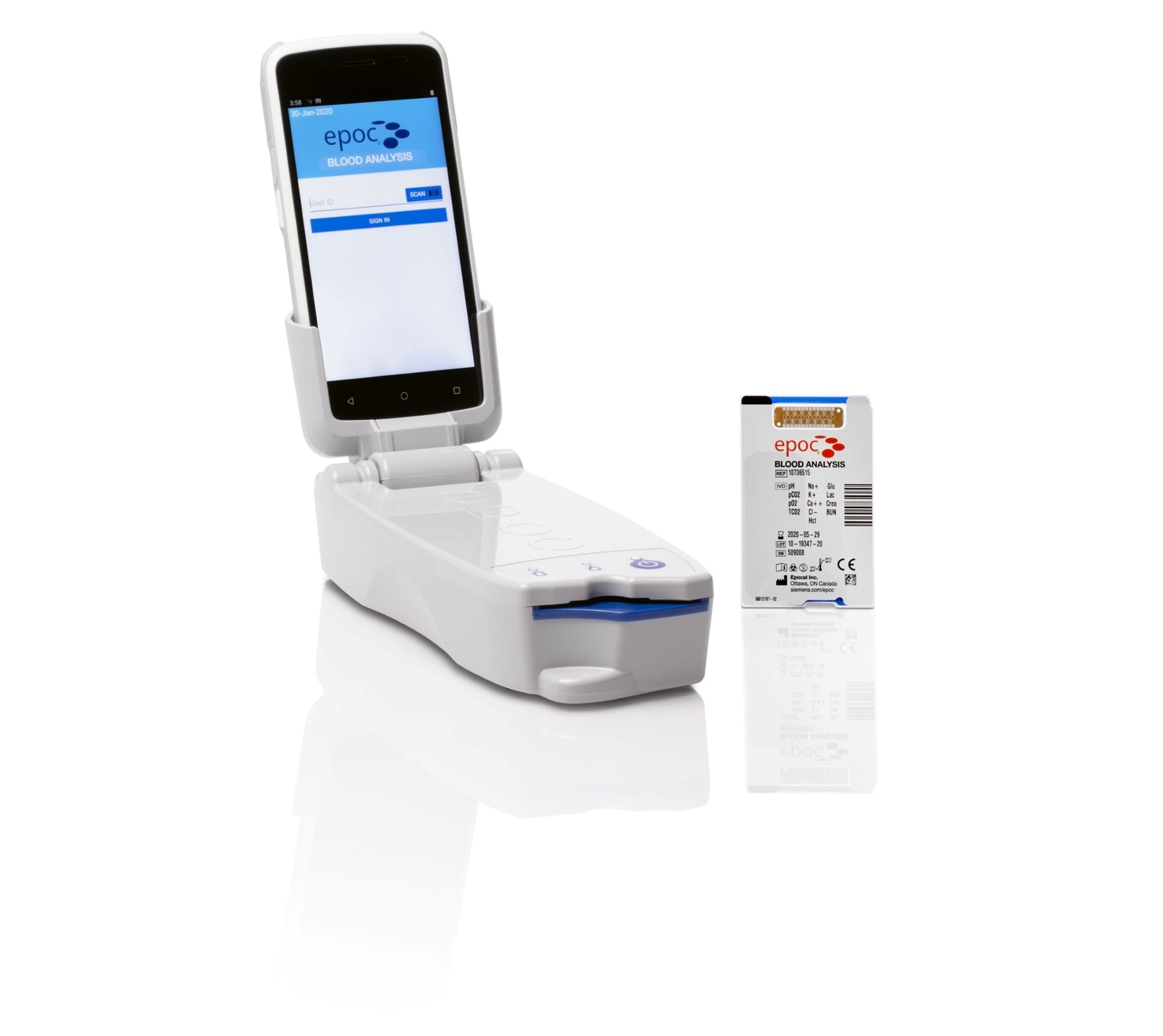
epoc NXS with BGEM Test Card. Image Credit: Siemens Healthineers
- Simplify inventory management
- Deliver real-time results and reporting
- Streamline patient-testing workflow
- Accelerate clinical decision making
A system that delivers actionable test results in less than 1 minute at the patient’s side via a secure, wireless, handheld device.
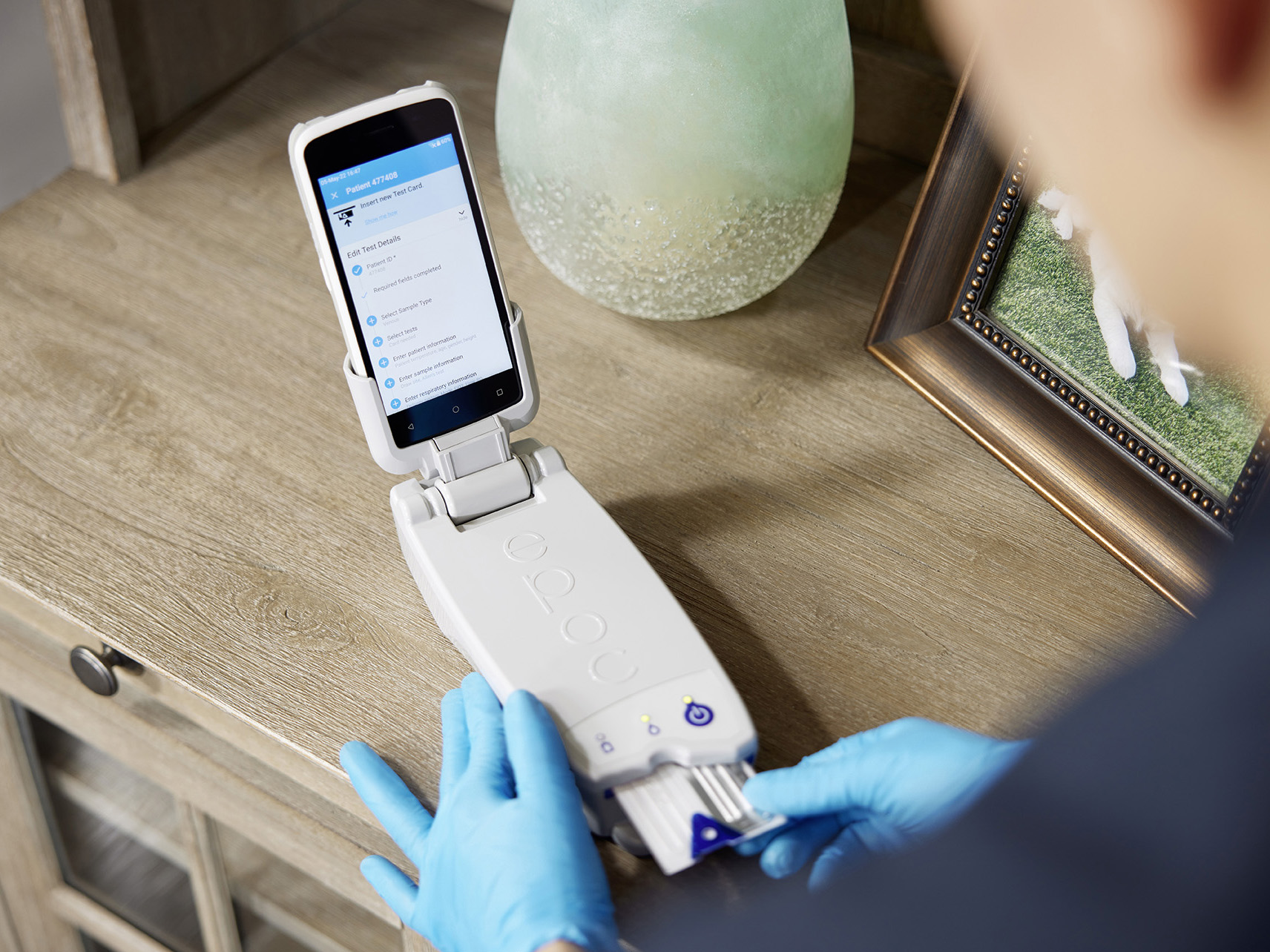
Image Credit: Siemens Healthineers
After introducing the sample at the patient’s side, the epoc Blood Analysis System delivers results for a full panel of essential tests on a single, stable test at room temperature in less than 1 minute.

Image Credit: Siemens Healthineers
A single room-temperature stable test card includes a complete blood gas, basic metabolic panel, hematocrit, and lactate.
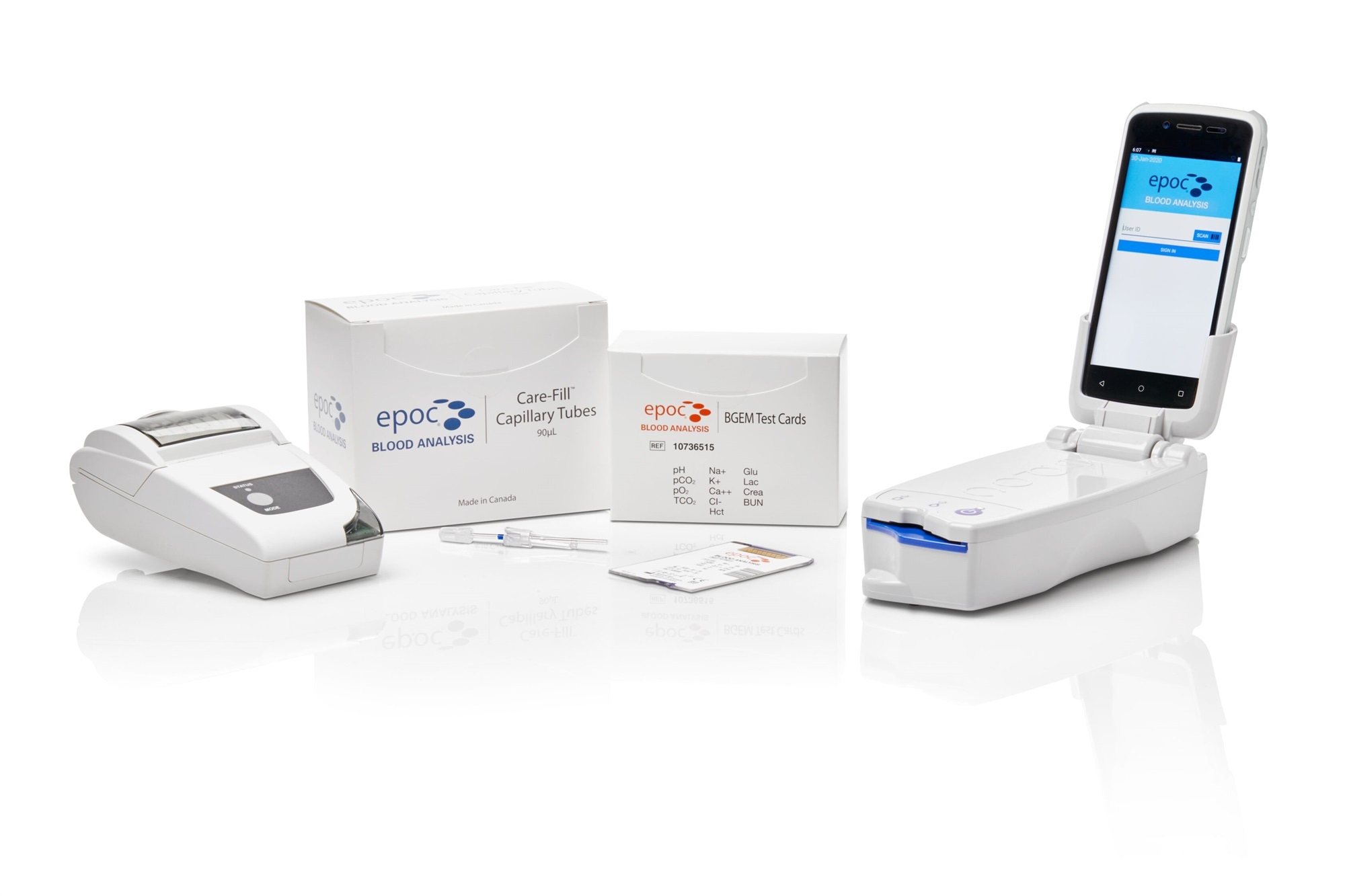
Image Credit: Siemens Healthineers
Transforms how care is provided in the NICU by accelerating treatment decisions and minimizing sample collection for effective neonatal care.
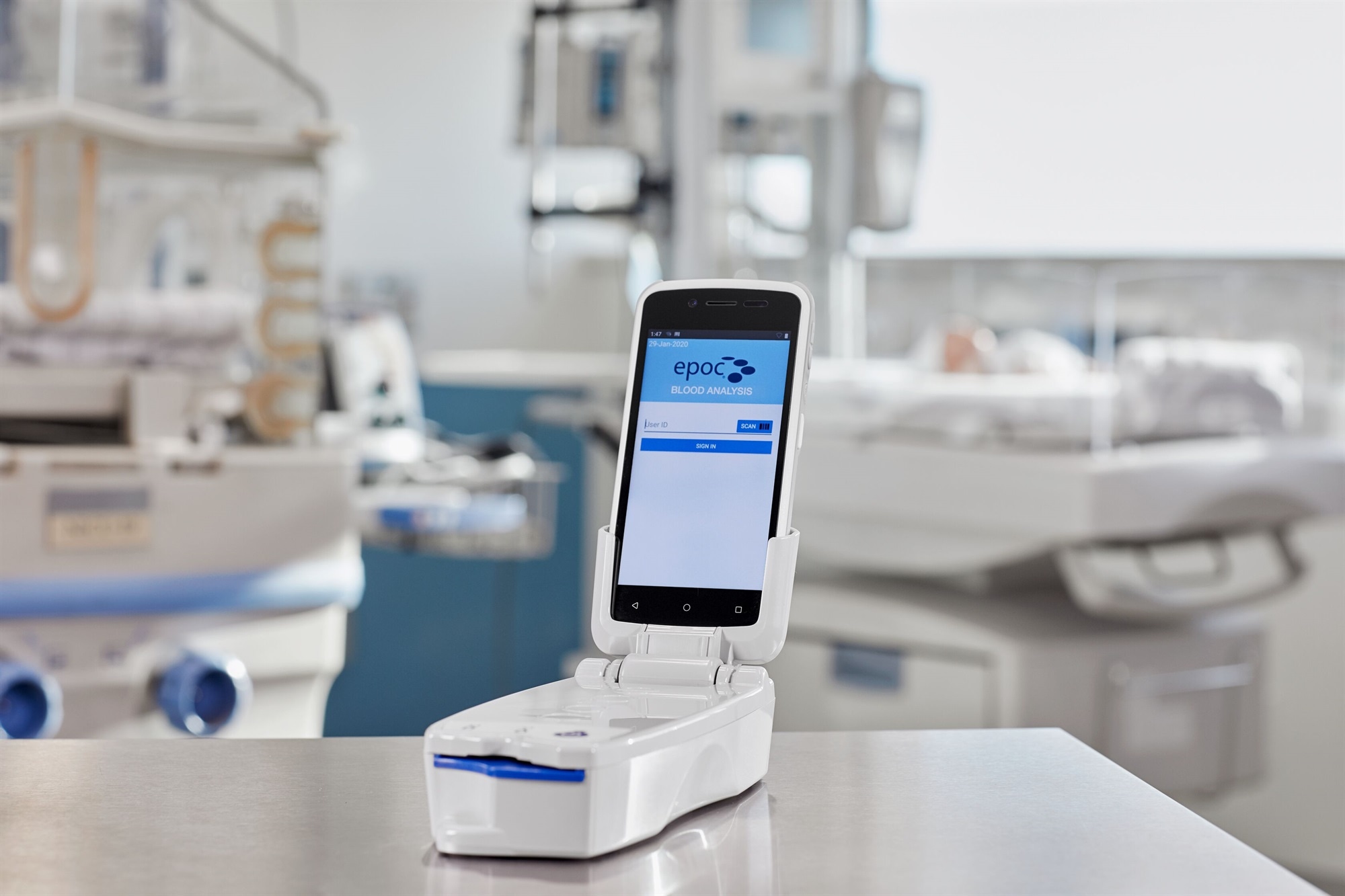
Image Credit: Siemens Healthineers
Make patient-side testing the nexus of care hospital-wide with the epoc Blood Analysis System.
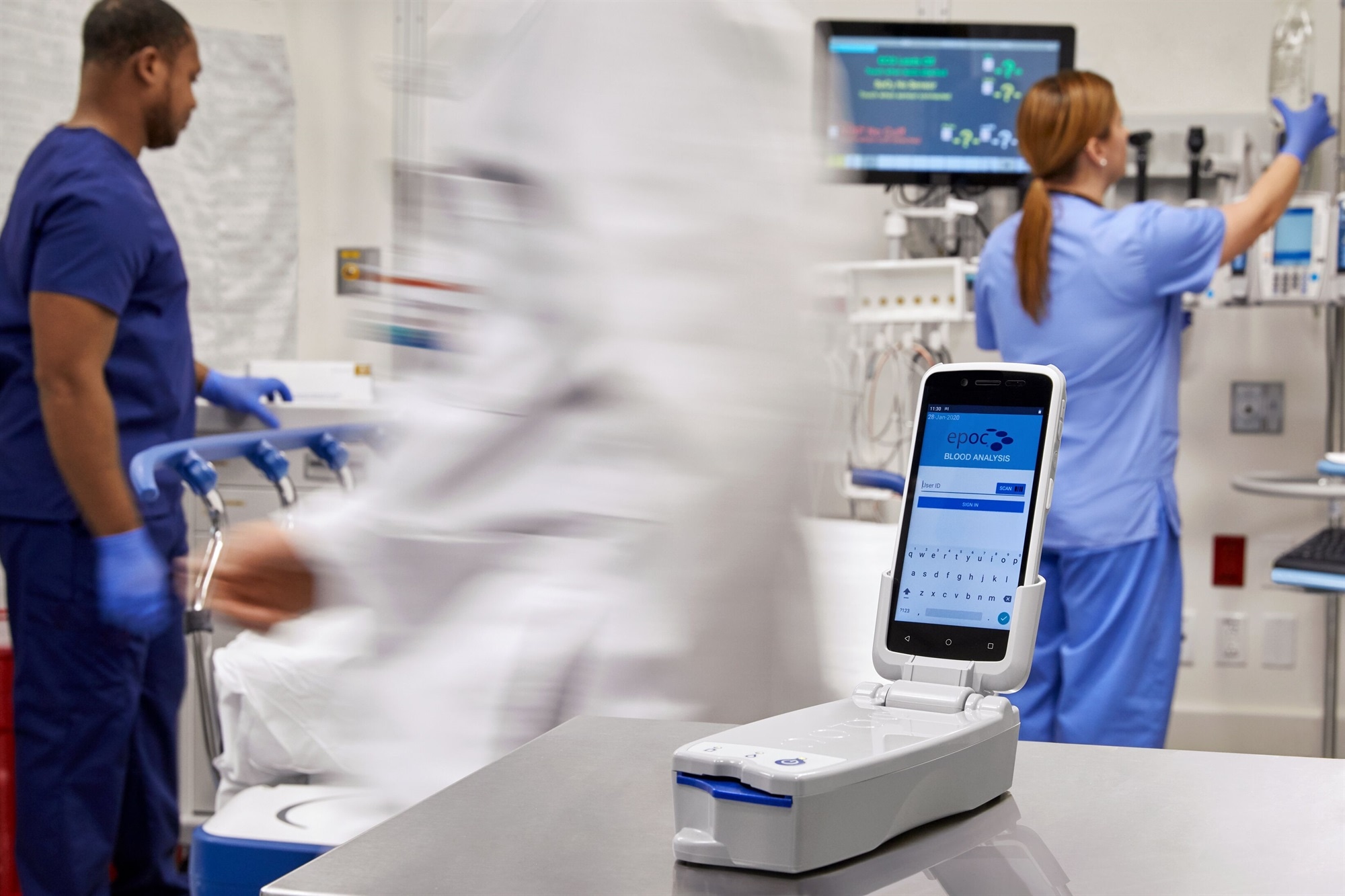
Image Credit: Siemens Healthineers
The epoc system makes it easier for clinicians to gather the 90 µL of sample needed for testing from heparinized capillary samples.
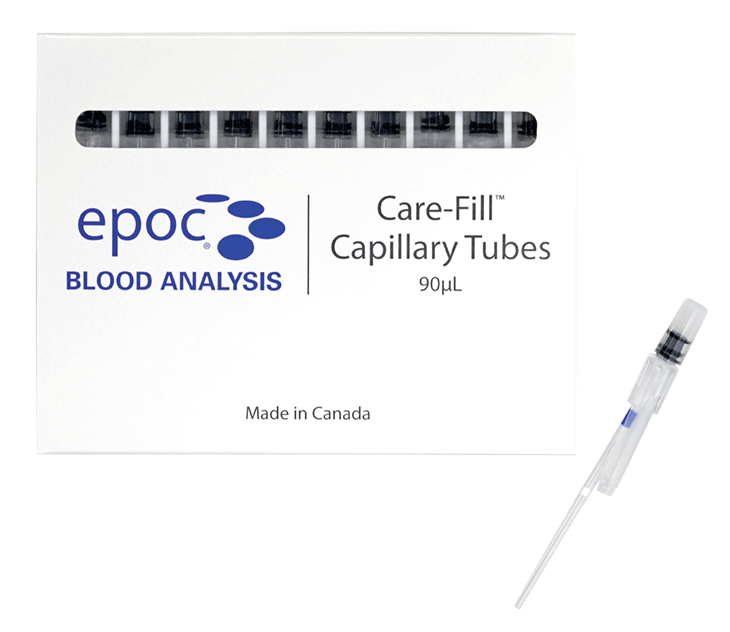
Image Credit: Siemens Healthineers
Features and benefits
Streamline patient-testing workflow
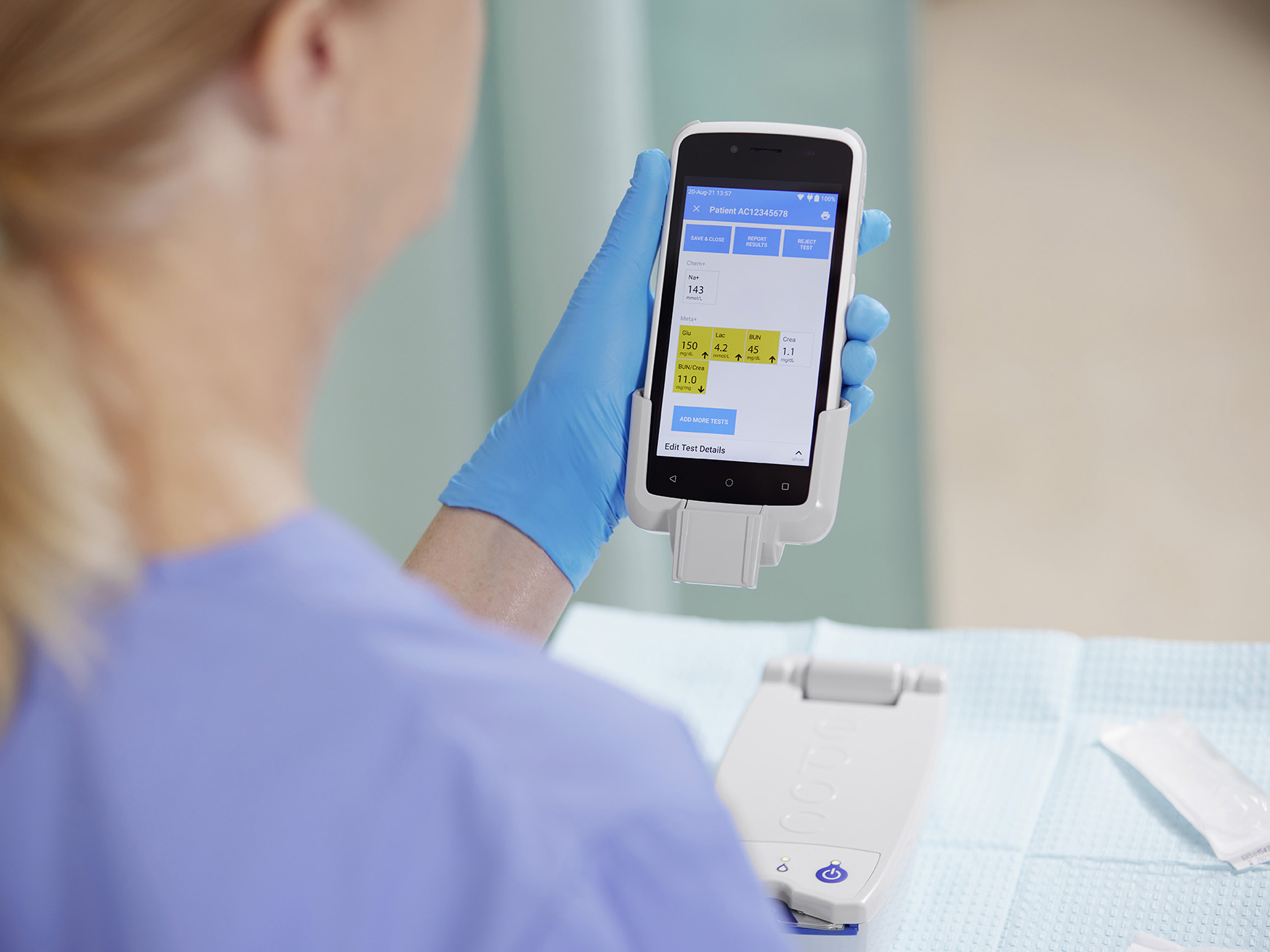
Image Credit: Siemens Healthineers
The epoc System helps mitigate risk by eliminating transport, providing reliable patient identification, and enabling secure, wireless team communication.
Accelerate clinical decision making
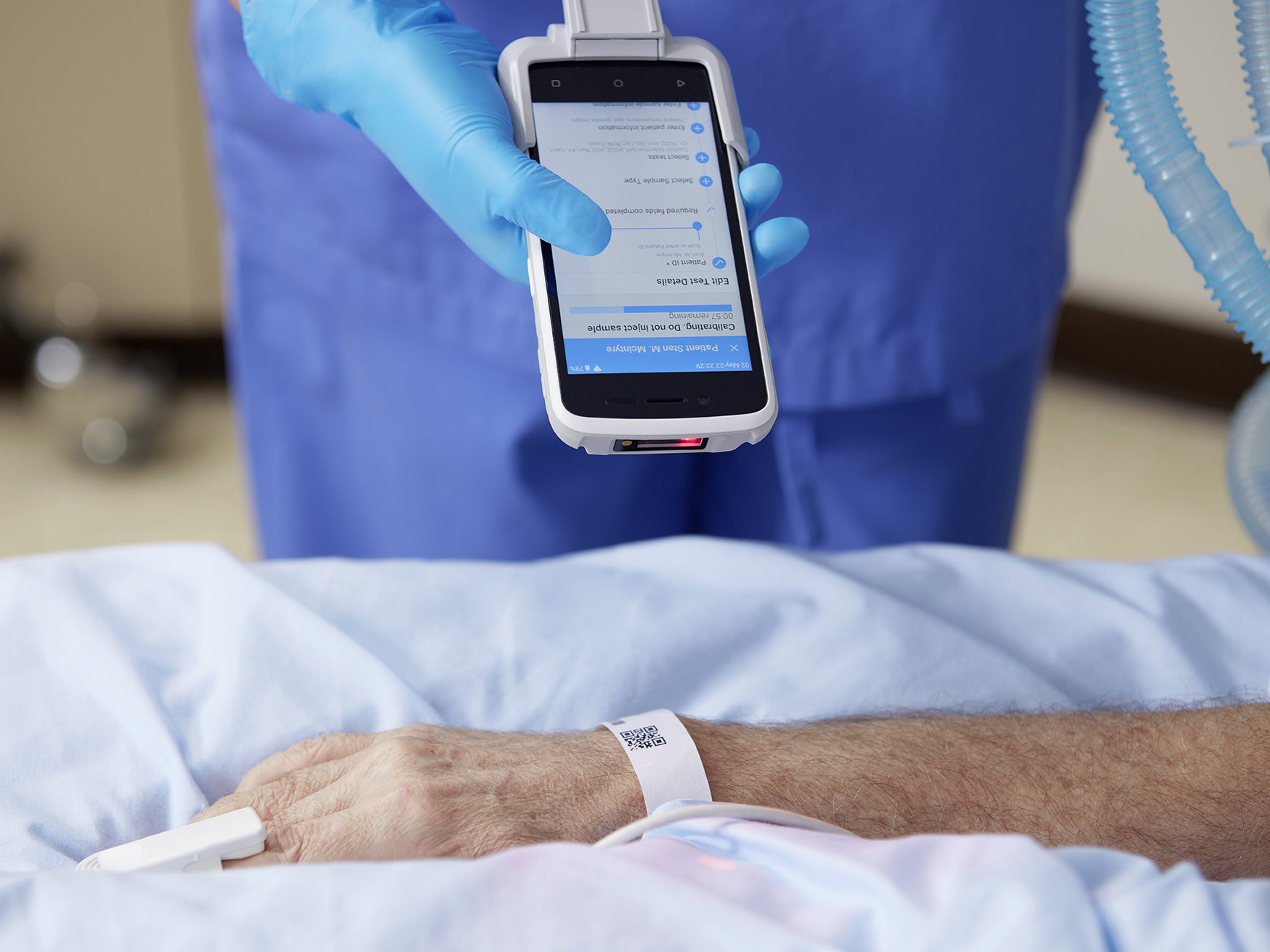
Image Credit: Siemens Healthineers
Provides actionable results at the patient’s side, simplifies POC management, automates quality assurance, and streamlines processes.
Simplify inventory management
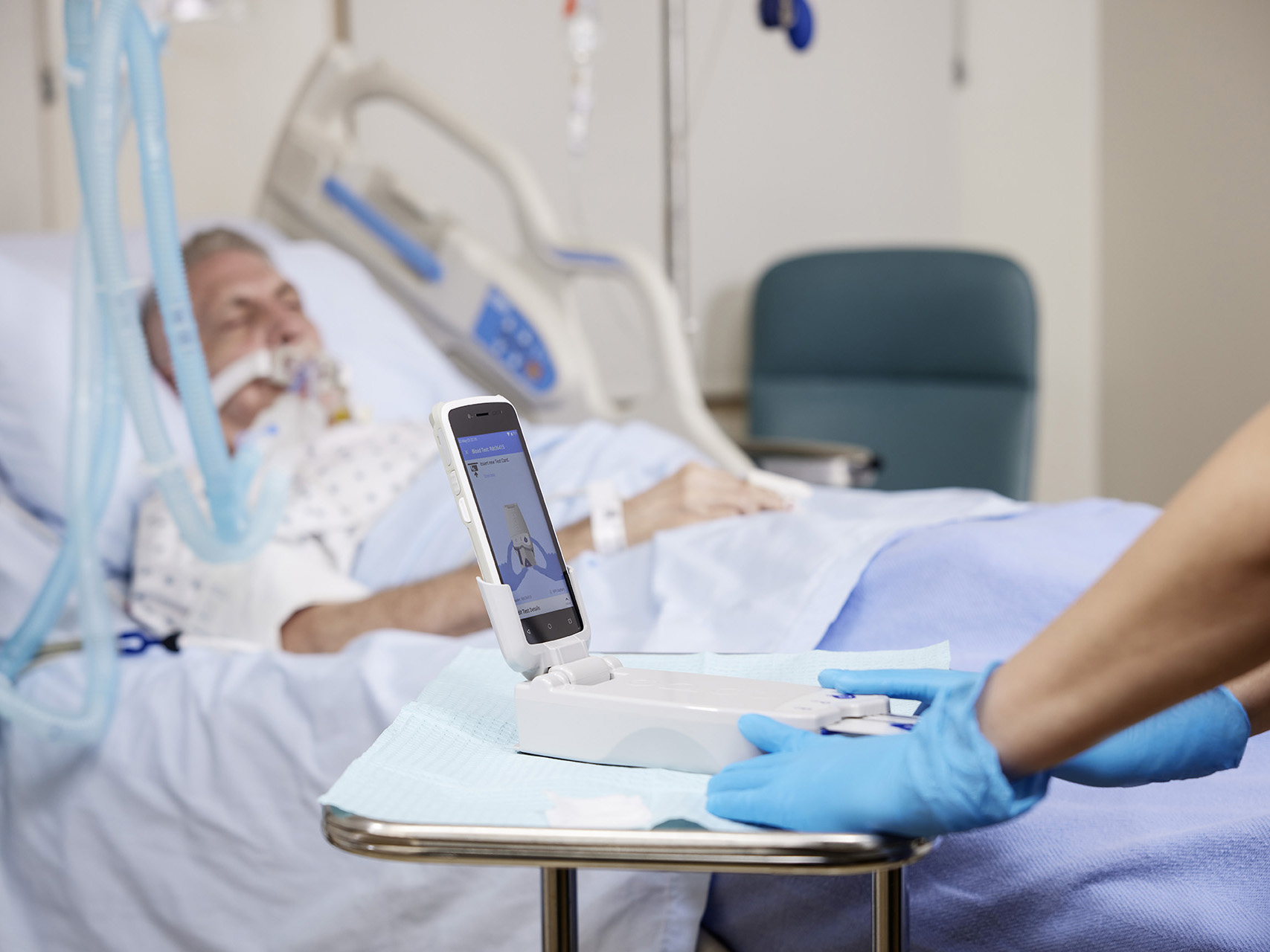
Image Credit: Siemens Healthineers
The epoc system offers a more effective and easy-to-manage patient-side testing program by including a complete menu on a single, room temperature-stable test card bar-coded for quality assurance.
Deliver real-time results and reporting

Image Credit: Siemens Healthineers
With an integrated wireless connection, users can quickly achieve centralized control over decentralized testing by transmitting findings from the patient’s side to the EMR/LIS/HIS in real-time.
What customers are saying about the epoc Blood Analysis System
I think our (sepsis) mortality on the initial floors dropped by almost 50% in the first 3 to 6 months.”
Jason Smith, MD, Huntsville Hospital
After using the epoc Point of Care Blood Analysis System for 8 months, a 48% reduction in operating costs over the previous year was achieved.”
Clarke Woods, BS, and Dave Culton, BA, Pinnacle Health Proven
The epoc system showed excellent precision and accuracy and compared favorably with the I-STAT and ABL 835 Radiometer assay results. Evaluation studies were performed as per the Clinical Laboratory Standards Institute (CLSI) guidelines. The epoc system uses a single test card with all the different analytes including glucose, lactate, creatinine, and chloride, whereas the I-STAT system uses multiple test cartridges for the same results. Lastly, the smart card technology of epoc reduces cost and maximizes efficiency in the hospital setting.”
Shweta Agarwal, MD & Rabia Shafi, MD, Point of Care
Clinical use
The epoc system’s test findings are consistent with those from top benchtop point-of-care blood gas and chemistry analyzers.
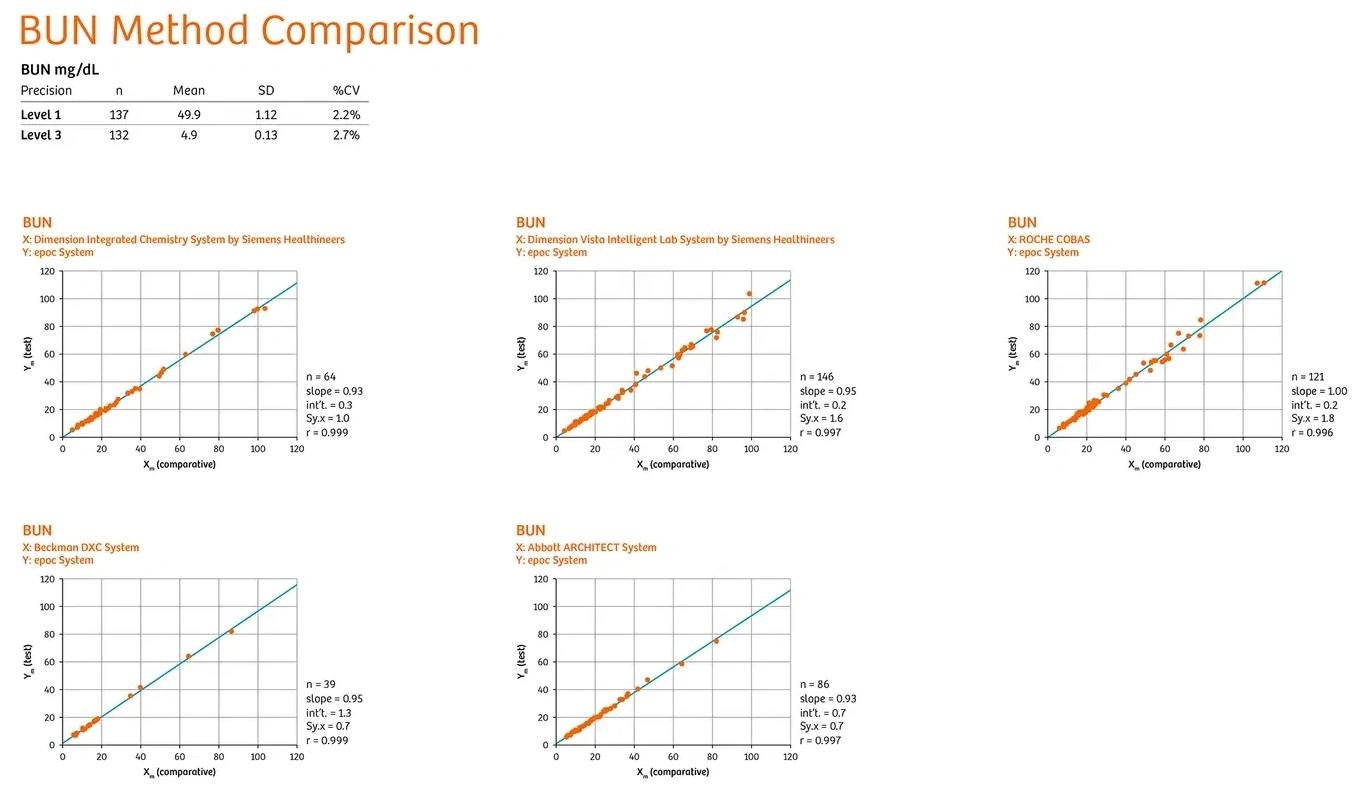
Image Credit: Siemens Healthineers
Assays
Table 1. Measured parameters. Source: Siemens Healthineers
| Parameter |
Unit of Measure |
Measurement Range |
| pH |
pH units |
6.5–8.0 |
| pCO2 |
mmHg |
5-250 |
| kPa |
0.7-33.3 |
| pO2 |
mmHg |
5–750 |
| kPa |
0.7–100 |
| TCO2 |
mmol/L
mEq/L |
5-50 |
| Na+ |
mmol/L
mEq/L |
85–180 |
| K+ |
mmol/L
mEq/L |
1.5–12.0 |
| Ca++ |
mmol/L |
0.25–4.00 |
| mg/dL |
1.0–16.0 |
| mEq/L |
0.5–8.0 |
| Cl- |
mmol/L
mEq/L |
65–140 |
| Hct |
% PCV |
10–75 |
| L/L |
0.10–0.75 |
| Glu |
mmol/L |
1.1–38.5 |
| mg/dL |
20-700 |
| g/L |
0.20-7.00 |
| Lac |
mmol/L |
0.30–20.00 |
| mg/dL |
2.7–180.2 |
| g/L |
0.03–1.80 |
| Crea |
mg/dL |
0.30–15.00 |
| μmol/L |
27–1326 |
| BUN |
mg/dL |
3-120 |
| Urea |
mmol/L |
1.1-42.8 |
| mg/dL |
7-257 |
| g/L |
0.07-2.57 |
Table 2. Calculated parameters. Source: Siemens Healthineers
| Parameter |
Unit of Measure |
Measurement Range |
| cHgb |
mmol/L |
2.0-15.5 |
| g/dL |
3.3-25 |
| g/L |
33-250 |
| cHCO3- |
mmol/L
mEq/L |
1-85 |
| cTCO2 |
mmol/L
mEq/L |
1-85 |
| BE(ecf) |
mmol/L
mEq/L |
30 – +30 |
| BE(b) |
mmol/L
mEq/L |
-30 – +30 |
| cSO2 |
% |
0-100 |
| GFRmdr*† |
mL/min/1.73m2 |
2–60 or >60 |
| GFRmdr-a*† |
mL/min/1.73m2 |
2–60 or >60 |
| GFRckd‡ |
mL/min/1.73m2 |
1-225 |
| GFRckd-a‡ |
mL/min/1.73m2 |
1-225 |
| GFRswz§ |
mL/min/1.73m2 |
1-275 |
| AGap |
mmol/L
mEq/L |
-14 – +95 |
| AGapK |
mmol/L
mEq/L |
-10 – +99 |
| BUN/Crea |
mg/mg |
0.2-400.0 |
| Urea/Crea |
mmol/mmol |
0.8-1615.4 |
| mg/mg |
0.4-856.8 |
| A |
mmHg |
5-800 |
| kPa |
0.67-106.64 |
| A-a |
mmHg |
1-800 |
| kPa |
0.13-106.64 |
| a/A |
% |
0-100 |
| fraction |
0-1 |
Institutions should establish and set their own normal range values.* Values >60 will be reported as >60 mL/min/1.73 m2.† IDMS-traceable MDRD type‡ CKD-EPI equation§ Bedside Schwartz equation
Technical details
Table 3. Sample size. Source: Siemens Healthineers
| . |
. |
| Sample volume |
92 µL from a syringe/90 µL from CareFill™ Capillary Tube
|
| Analysis |
|
| Time to result |
Less than 1 minute |
| Quality Control |
Eurotrol GAS-ISE Metabolite control;
Eurotrol Hematocrit control |
| Test Card |
|
| Calibration |
Automatically performed prior to every test |
| Storage |
15–30 °C |
| Shelf life |
Up to 5 months |
| Integrated Barcode Scanner |
Patient ID and Operator ID;
1D and 2D bar-code format |
| Operating System |
Android OS |
| Communications |
Real Time Wireless, LIS/HIS via data management system, |